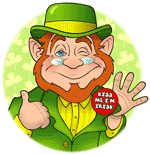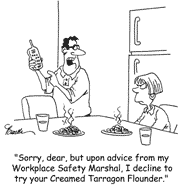| What is a lead? |
 |
 In the parlance of journalism, the first paragraph of an article is called a lead
( sometimes spelled 'lede' among newspaper copyeditors.) It is the most important aspect
of your story because it "sells" the story to the reader. In the parlance of journalism, the first paragraph of an article is called a lead
( sometimes spelled 'lede' among newspaper copyeditors.) It is the most important aspect
of your story because it "sells" the story to the reader. The feature story
lead can be playful and descriptive but, as in a news lead, it must always contain an
element of the central point of the story.
One of the most popular ways to lead a feature is the narrative lead.
March issue of PAGES for subscribers ª |
| The narrative lead: Great for
feature stories |
 |
| In this example, notice that the
writer uses emotional, tactile, and visual description in a simple, but compelling lead: (Newsweek)
On a frozen morning in hilly rural Wisconsin, the dead deer lay stacked in a pile, like so
much garbage. Big and brawny, these whitetail bucks and does should be prizes. But the
hunters who shot them are afraid to take them home. --- end quote --
This story, about the spread of a mysterious wasting disease among deer in the Midwest,
is a brilliant example of using description to make a point. This paragraph involves the
readers senses in the story from feel (frozen) to sight (stacked deer, big and brawny),
and smell (like so much garbage). It ends with emotion: The hunters are afraid -- an
unexpected juxtaposition of subject and emotion.
For PAGES Web subscribers: Link to March art ª |
| When it should be used |
 |
 Narrative leads
can -- and even should -- be used when the main point of your story involves an action of
some sort. Narrative leads
can -- and even should -- be used when the main point of your story involves an action of
some sort. Narrative leads can inspire emotion and interest, but they are often
misused.
Here is a typical example of a poorly constructed narrative lead that we've seen (with
variations) hundreds of times:
Sheriff Smith leaned back, took a sip of coffee, and sighed. "We've been
busy," he said.
March cartoon page ª |
| Why was that
lead bad? |
 |
| The Sheriff Smith lead above
fails the test of narrative leads. 1. Narrative should describe interesting action.
In the case of the sheriff, the action is commonplace. Yes, it is possible to imagine a
situation where common actions are extraordinary. Maybe the sheriff is on the moon. Okay,
then the sheriff sitting at his desk sipping coffee is indeed unusual.
2. Narratives should describe a pivotal concept of the story.
You could say, and some will no doubt argue this, that the contrast between the
relaxing sheriff and his assertion that he has been busy describes the pivotal moment.
But, unless the story is about a lazy sheriff, then the narration in this case is really
about an unrelated moment in time: The meeting of the writer and the sheriff.
3. The execution of the narrative must be exceptional.
In the Newsweek example the writer has crafted an unusually strong image for a
unusually dramatic situation. To pull off a narrative you have to be a good writer with an
appropriate subject.
|
|